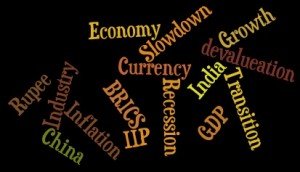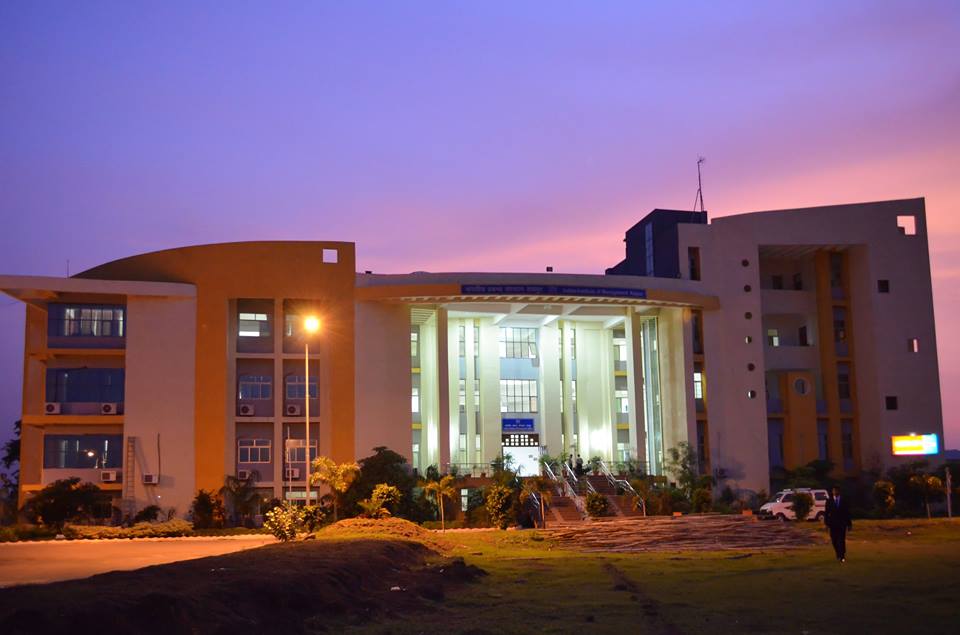Inflation – Vital Macroeconomic Indicator
Whenever I pore over national dailies, it is quite usual that a debate on Inflation is ostensible. Inflation is making headlines for pink papers. It is in the thick of the things. From domestic to exotic watch dogs, everyone is keeping a close eye on its movement. Ranging from indigenous economists, GOI, policymakers, investors, giant market players to exotic financial institutions such as IMF, World Bank, global investors, each one of them is keeping a tab on inflation indices. No doubt inflation is an indispensable macroeconomic indicator of an economy.
Due to a tad dip in inflation, it is observed that confidence in market grows by leaps and bounds. Spurt in inflation causes market to take the plunge. Its chequered stint can insinuate whether an economy is in the pink or in red. Unanimously we can avow that inflation sends an economy on a roller coaster ride.
Transient environment – Changing Economies
At a flash of second, global economy is transforming its shape. From Cyprus financial crisis to Abenomics in Japan, it is evident that global economy doesn’t dwell on fixed and presupposed parameters. With swinging environs, now it is obvious that global prospect of economy also modifies. A nation’s economy or market can swirl on account of other equally vital macroeconomic factors. An economy also keeps in sync with other macroeconomic indicators. As an adage says that devil lies in the details. Intricacies in an economy also rise with pacing environments. A handful of other macro indicators can play spoilsport. Thus macro indicators such as GDP growth rate, current account deficit, fiscal deficit, Index of industrial production, ICOR ratio to name a few are gaining traction. In fact in many scenarios, these indicators are nullifying the effect of inflation on economy. A holistic and integrated effort can only bring an economy to black.
In our nation too, same plot gains weight. There are many insidious forces which hold key for growth. We need to fire on all cylinders to revive our economy. Our economy is also not left untouched from the vagaries of such mighty powers implicit in the nation.
Dichotomy between WPI and CPI
Wholesale price index indicates prices at wholesale level. It measures inflation in a basket of fixed wholesale goods. Hence it doesn’t show inflation’s true magnitude. And it is understood that inflation pegged at WPI Index would be lower than the actual inflation prevailing. On the contrary Consumer price Inflation gauges exact inflation, which consumer faces. It is retail inflation.
Recent WPI and CPI data (April 2013) released by Ministry of Statistics, showed that WPI based inflation was hovering over 4.89% whereas CPI based inflation was still at 9.39%, which is quite high above comfortable zone. Therefore claims of lower inflation are not justifiable anymore.
Reserve bank of India also opines that inflation is untamed. That is the reason behind RBI’s act of not paring down CRR. To ease market environment, RBI reduced repo rate by 25 bps in the latest mid quarter monetary policy review. The takeaway message for home is that inflation is still unrelenting to cede. Alas! Growth in our economy can’t be sustained with dogged inflation.
Slumping Growth
GDP growth rate of a nation is testament or talisman for growth. It defines roadmap for progress of a nation. GDP points in the direction in which economy of a nation is heading. It is the pivotal cornerstone of an economy. It is like a kernel of operating software. GDP is most widely accepted macroeconomic indicator. Unfortunately GDP numbers don’t give a breather or respite to us. But they urge us to act swiftly on this front. PMEAC estimated growth outlook for current fiscal at 6.9%. While IMF released it outlook for GDP growth rate at a mere 5.3%!!
This brooks no delay. We must act together to put things in place. GOI must resort to each necessary initiative. If this rot is not nipped in the bud, it will give rise to catastrophic outcomes. It warrants no political paralysis.
Succumbing Industrial production
IIP (Index of Industrial Production) index gauges industrial production and manufacturing activities of a nation. It shows growth of essential core sectors of economy. Vital sectors such as electricity, cement, coal, and steel to name a few are constituents of IIP index.
Over the quarters, it is evident that we are clocking a negative growth in IIP index. Horrendous figure of -2.5% at IIP index leaves no room for growth. Declining manufacturing and production will throw our economy to Stone Age, if nothing is done to pull it up.
Spook of Twin Deficit
Fiscal deficit is almost touching all time high of 5.2% of GDP. According to World Bank, fiscal deficit is the principal reason for paucity of investors in our economy. Dearth of investment in market haunts any last hope or last straw for growth. Subsidies given to BPL families are a major reason for widening fiscal deficit. Thanks to our poor public distribution system. It has innumerable loopholes and inefficiencies. As a result of that, many middlemen stash away hordes of funds to satiate their appetite. We need to cut unwarranted subsidies and adulteration, which throws fiscal deficit to astronomical heights.
UIDAI based Direct Cash Transfer scheme is a welcome step to arrest yawning subsidies. According to Planning Commission, fiscal deficit will be reduced by 1.1% if we can successfully implement flagship programme. Disinvestment of cash rich PSUs are on the anvil to raise revenue receipts. We must embrace such decisions to bring back economy on track of growth.
Current Account Deficit (CAD) is a major stumbling block in path of progress. Bloating CAD is worsening our Balance of Payment. Our burgeoning appetite for gold is the main contributor towards gaping CAD. Lack of formal banking and dud financial instruments are attracting investors towards yellow metal. But import of gold is a drag on national economy. Recent scams such as chit fund and collective investment schemes have unearthed stark reality. These incidents corroborate the fact that we need more access to formal banking. Only 49% of our population is banked. Penetration of financial inclusion is tepid. GOI must lure investors by making financial instruments more beneficial and fruitful. That is the only way available to wean away investors from yellow fever.
CAD for 2012-13 fiscal has touched a record high of 5.4% of GDP. To incarcerate that scorching pace of CAD, we must inculcate corrective measures. Otherwise comatose economy will not be able to recuperate towards growth.
Trade Deficit- On a spree
Gulfing trade deficit is posing challenge for our policy makers. Surging trade deficit bedevils our foreign exchange reserves and BoP. Over the years trade deficit wield over growth prospects has tighten further. As a result domestic production and employment hurts. Ranging from economic outlook to GDP, it is proven that trade deficit exacerbates a good amount of productive and valuable assets.
Without ant procrastination we must stem this rot. Promotion of exports and differential pricing regime, as recently announced by GOI are right steps in that direction. Establishment of SEZs and National Manufacturing Zones are need of hour. Promulgation and dispensation of subsidies, incentives and tax breaks will empower our lethargic exports sector.
Battered Rupee
Previous year’s debacle with the hands of dollar reminds us of weak and mutilated rupee. Rupee touched historic low of 57.15 against dollar. Many global financial institutions and economic pundits speculated depreciation of rupee to breach even a whopping mark of 60!! This evinces a grave and sorry picture of rupee. Lack of FII and FDI inflows, stalled projects and high interest rates are aiding to that. Recent market revelations pegged rupee at 55.45 against dollar. Thus rupee is still not out of woods. Eschew of immediate corrective steps should be negated. Because any sort of drift will vitiate rupee and mercurial growth.
We must cultivate a mechanism to guard rupee from whims and fancies of external nonconductive environs. Dependence of our economy on global caprice must be eradicated or rather minimized to naught. Elusive growth can be achieved by annihilating such ephemeral widespread influence on economy.
Standard & Poor’s recent outlook for India was remained negative. It assigned a sovereign rating of BBB-. The crux in that release was probability of one out of three for downgrading sovereign rating of India to Junk grade. S&P reaffirmed that India was likely to grow at the growth rate of 5.2%. It also warned us of loopholes afflicting our economy. With a rapt of proposed reforms, S&P took a speculative outlook on India.
Silver lining in these hard circumstances is to introduce a volley of reforms, as prescribed by S&P too.
Crippling Business
A covetous report has been released by World Bank on ease of doing business. According to the report, India remained a laggard with a staggering 132 position!! We are lagging behind our neighbours such as Pakistan, Sri Lanka to name a few. This is totally detrimental for maintaining growth and confidence of institutional investors.
A set of reasons viz. ubiquitous red tape, lukewarm environmental clearances, lackadaisical land acquisition, lack of infrastructure and retrospective tax laws such as General Anti Avoidance Rule (GAAR) is responsible. We need to iron out such obnoxious elements to preserve our economy and growth.
In a Nutshell – Panacea for Growth
Recent marquee investments such as Air Asia partnering with the Tata for a low cost airline, Unilever investing $5401 million to own a 75% stake in its Indian subsidiary, Qatar Foundation acquiring a 5% stake in Bharti Airtel for $1260 million and Ikea putting in $2000 million avers inherent market consumption potential. However, a recent report released by IMF revealed of Indian economy incarcerated with middle income trap. As an emerging economy complacency will cost a heavy price.
In another report released by IMF, it states that by 2030 emerging economies or BRICS will constitute a lion’s share of world’s savings. Our nation will enjoy highest demographic dividend in coming decades. In order to achieve 8% or more growth we must stoke the level of education so that productivity and seamless supply of skilled labour don’t get hampered.
To overcome daunting challenges and a plethora of quagmires riddled in the path of sustainable growth, we must instil salubrious environment of unison. A unified, innovative and synergetic approach is required to take on invidious intricacies in economy. I am presumptuous of India repeating the encore and transforming proverbial “Golden Sparrow” of yore into verisimilitude of today.
[The article has been written by Nitin Singh. He is presently pursuing his MBA in finance from Symbiosis Institute of Management Studies, Pune prior to which he has worked with TCS for two years as a Java Developer.]



































